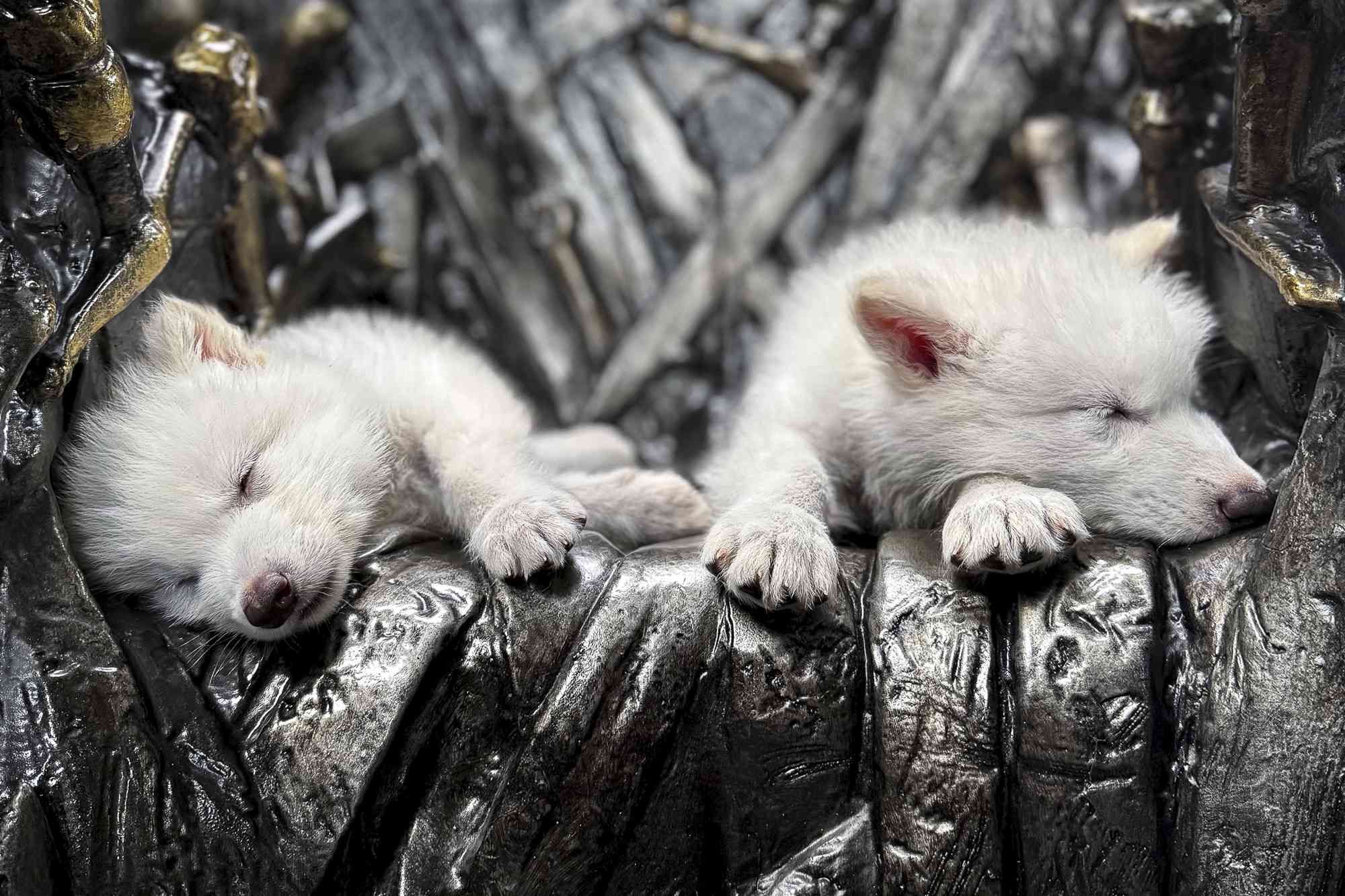Dire wolves, which vanished about 12,500 years ago, have now returned thanks to advances in genetic engineering — marking what scientists are calling the world’s first true de-extinction.
Researchers at Colossal Biosciences, a biotech company focused on conservation and famous for its efforts to revive the woolly mammoth, announced the successful birth of three dire wolf pups (Aenocyon dirus). By reconstructing the ancient predator’s genome from preserved DNA, the team isolated gene variants that were exclusive to dire wolves and not found in their modern relatives.
Using this data, scientists modified the DNA of present-day gray wolves (Canis lupus) to include those unique genetic traits. They inserted the edited DNA into egg cells from gray wolves that had been stripped of their original nuclei, cultivated them in a lab, and implanted the embryos into surrogate dogs, according to TIME. This led to the birth of three snowy white pups—named Romulus, Remus, and Khaleesi—whose appearance evokes Ghost, the iconic dire wolf companion of Jon Snow from HBO’s Game of Thrones.
“Our team took DNA from a 13,000 year old tooth and a 72,000 year old skull and made healthy dire wolf puppies,” Colossal CEO Ben Lamm said in a statement. “It was once said, ‘any sufficiently advanced technology is indistinguishable from magic.’ Today, our team gets to unveil some of the magic they are working on.”
Also Read: India tops Germany as 3rd-largest Renewables power producer
How to make a dire wolf
To “de-extinct” the dire wolf, the team used a process similar to the one that led to Dolly the sheep in 1996.
To produce a perfect clone with this method a single cell is removed from the cloning subject and its genetic material, held in the cell’s nucleus, is extracted. This genetic information is then inserted into the egg of a donor animal from the same species whose own nucleus has been removed. The egg now contains all of the genetic information required to rebuild the original cloning subject and is transferred to a surrogate to carry to term.
However, because dire wolves went extinct at the end of the last ice age, Colossal had to approximate their own dire wolf cells by piecing together clues from the fossil record.
To reconstruct the animal’s genome, they used genetic samples from dire wolf fossils and compared these to the genomes of their living relatives, including wolves, jackals and foxes. They selected gray wolves to be the egg donors, as these animals are the closest living cousins to dire wolves.
Also Read: When will Delhi get relief from the heat wave? Weather agency answers
Dire Wolves Return After 12,500 Years
Thanks to advanced genetic engineering, scientists at Colossal Biosciences have brought dire wolves back from extinction—marking what they call the world’s first successful de-extinction.
By analyzing ancient DNA, researchers identified 20 crucial mutations across 14 genes responsible for the dire wolves’ traits—such as their larger size, white coats, big teeth, and distinctive howls.
Using CRISPR, the team edited cells from modern gray wolves to match these ancient gene sequences. These edited “dire wolf cells” had their nuclei transferred into egg cells that had been stripped of their own DNA.
The modified eggs matured into embryos in the lab. From 45 embryos, only two successfully implanted into domestic dog surrogates. Romulus and Remus were born on October 1, 2024, followed by Khaleesi three months later.
Colossal released videos showing the pups’ early steps and howls, describing them as the first real de-extinction. Though a cloned Pyrenean ibex was briefly born in 2003, it died minutes after birth—making the dire wolves the first to survive.
Also Read: Markets Open in Green: Key Factors Driving the Sharp Rebound and What Investors Should Do


[…] Also Read : Colossal Biosciences Announces Birth of World’s First De-Extinct Dire Wolf Pups […]
[…] Also Read: Colossal Biosciences Announces Birth of World’s First De-Extinct Dire Wolf Pups […]